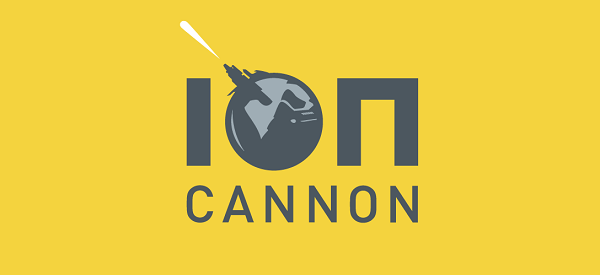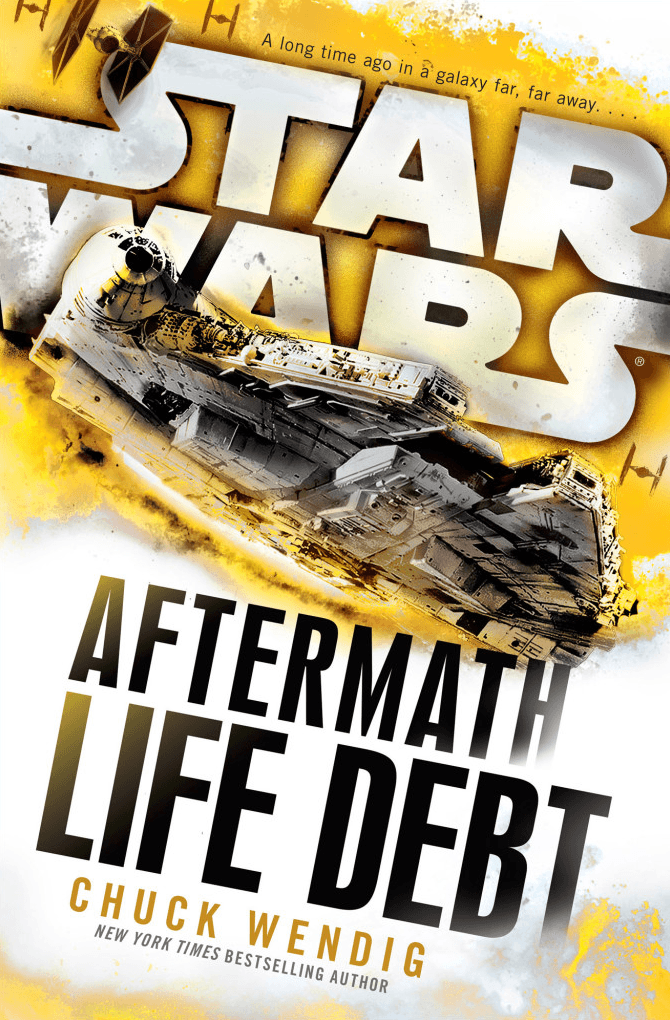Star Wars Beyond the Films‘ Nathan P. Butler is now posting short, non-spoiler reviews for many new releases. Spoiler-filled discussion will often follow in the weeks or months thereafter on the podcast.
Aftermath: Life Debt by Chuck Wendig (hardcover, 2016)
The second book in the Aftermath trilogy has arrived, and to say that I was not particularly looking forward to it would be quite an understatement. Those who follow Star Wars Beyond the Films here on SWR are likely already familiar with my thoughts on the first book in the trilogy, simply entitled Aftermath, released on Force Friday 2015. (If not, the discussion between me, Mark Hurliman, and Michael Morris can be found in episodes 189 and 190 of the podcast.)
It was tough to find truly “honest” reviews of Aftermath at the time for several reasons. First, it was a book touted as the first big post-Return of the Jedi novel, which put it immediately in comparison to Heir to the Empire and caused many to expect a story with the “Big Three,” only for it to turn out to be a story featuring a cast of almost entirely new characters that we had no reason (yet) to care about. Second, the book’s writing style was extremely polarizing, featuring present tense and a ridiculous volume of sentence fragments (based on a few sample sections, estimates run at about 1/3 of the “sentences” being fragments), both of which grated on many fans who were reading print copies instead of listening to the audiobook. Finally, there was a massive social media clash over the work, spurred on by a “Bring Back Legends” negative review campaign on Amazon, homophobic comments from some quarters, and the author, Chuck Wendig, giving as good as he got on social media, cementing his online persona in many fans’ minds in a very negative way.
On Star Wars Beyond the Films, we actually dealt with those three “bantha in the room” prior to our review so that the review itself could focus on the actual story of Aftermath, which was a decent (albeit run-of-the-mill) tale that probably wouldn’t have been a big deal to most readers if it hadn’t been the first post-ROTJ novel or so heavily promoted by Del Rey. I’d like to think that we were able to give it a fair appraisal, and I’d note that despite my disdain for how Wendig handled the firestorm over the book at the time, I have since found him, when not in his social media persona, to be someone with some ideas and comments worth considering. (An entire episode of my vlog is even dedicated to dissecting his comments to those wanting the Legends saga to continue.)
That said, after the mess surrounding Aftermath and the overhyped story therein, I was not at all excited for the release of Life Debt.
As it turns out, I was quite pleasantly surprised. Life Debt is a rather good Star Wars novel, and a strong entry into the Story Group’s new canon.
Life Debt
Life Debt brings back the Imperial-hunting team that formed by the end of Aftermath, consisting of New Republic pilot Norra Wexley; her son Temmin “Snap” Wexley (seen in The Force Awakens); New Republic soldier Jom Barell; bounty hunter Jas Emari (niece of Sugi from The Clone Wars); former Imperial loyalty officer Sinjir Rath Velus; and Temmin’s rebuilt battledroid, Mister Bones. On the Imperial side, action focuses around Grand Admiral Rae Sloane (featured frequently in Star Wars canon works) and the mysterious Fleet Admiral introduced in Aftermath, Gallius Rax.
When Chewbacca is captured during his mission with Han Solo and other scoundrels to liberate Kashyyyk without New Republic support, Han seeks to rescue him. When Han himself loses touch with a now-pregnant Leia (whom he married right after the Battle of Endor without anyone actually mentioning that in his brief appearance in Aftermath that set up this storyline), Norra’s team is asked to find him, leading to an adventure in which they find themselves involved in the effort to liberate the Wookiees from Imperial slavery.
Meanwhile, Rax’s machinations continue to push the New Republic and Empire toward the Battle of Jakku, even as Sloane tries to unearth his background and questions whether he truly has the galaxy’s best interests in mind.
Life Debt builds on Aftermath in a way that suggests that Wendig and Del Rey heard fans’ complaints about the previous book and took them somewhat to heart, though whether that is true would depend upon how far along in the process the book was when Aftermath‘s controversies were unleashed.
The writing style remains in present tense with a signifcant amount of sentence fragments, but the volume of fragments seems to have been lessened, and the tone feels more like someone with a snarky sense of humor trying to relate the story over drinks than simple third person narration. While the previous book could feel that way at times when listening to it in audiobook form, this time that impression carries into the print version well, making the text far less abrasive for the grammatically-minded.
The story also shifts to include Han, Chewie, and Leia as more than just bit players in interludes or side references, addressing the issue many had with Aftermath when it had little to do with the “Big Three.” (Luke fans should note, though, that he has already gone off into the galaxy, presumably to search for Jedi relics and the like, so he is not present in Life Debt.)
The novel also benefits from being the second book in a trilogy. The characters we met in Aftermath left us wondering why we should have a book about them instead of Luke, Han, and Leia as the first post-ROTJ novel of this new publishing era. Now, of course, we know them and their motivations. We have a history with them, albeit only one book worth. That allows the reader to be more invested in them and their struggles, particularly for the characters who were given more personal conflicts in the previous book (particularly Norra and Sinjir). That said, Jom Barell, who was not really part of the group in Aftermath and was sort of tossed into the group at the end still feels like he hasn’t quite earned his place on the team or in Life Debt.
The frequent “interludes” continue in Life Debt, but you get the sense, given that some feature characters already seen among the interludes in Aftermath, that some of these interludes might actually be building toward something, rather than just being glimpses into the galaxy at large. There’s even a brief interlude with Maz Kanata, which is sure to intrigue fans of The Force Awakens.
One strange element of the book is its treatment of the identity of the Fleet Admiral, set up in Aftermath. Whereas Aftermath kept his identity unknown, building a real sense of mystery for the reader, Life Debt simply names him early on without any sense that there was ever really any mystery there at all. There is no big revelation, nor any acknowledgement that readers didn’t already know his identity in the previous book. It is a small issue, and it certainly does not take away from the interesting new mystery of learning his background, but it is jarring to have one of the biggest unanswered questions from Aftermath solved in a quick, no-frills name-drop very early in Life Debt. If you’re going to build such mystery, there should be payoff beyond, “Oh yeah, that’s his name. Did we forget to tell you in the last book?”
Lastly, I should note before diving into a final verdict that there will be some who find a particular interlude a bit frustrating. In this era of real-life political squabbling, people finding reasons to be offended by just about anything, and social agendas being pushed in pop culture, Wendig’s inclusion of several gay characters in Aftermath caused a bit of a stir (despite not being the first time that had happened in Star Wars fiction, nor even in the new canon). This time around, Wendig pushes the social envelope a bit with the use of gender neutral pronouns (zhe, zher, etc.) that most of American society dismissed almost immediately upon being introduced into modern gender nomenclature. Some will find it odd, some will cheer, and others will turn red with annoyance. It is what it is, and Wendig is who he is, so for most readers it should not be a big deal, but it’s there, and it is sure to raise some eyebrows, though hopefully without becoming the lightning rod that Sinjir’s homosexuality became with Aftermath. (And, yes, Sinjir has a boyfriend now, and that boyfriend does have more story impact than just existing to highlight Sinjir’s sexual orientation.)
The Verdict
Overall, Life Debt is a vast improvement over its predecessor and a strong Star Wars tale in its own right. While I am still somewhat reluctant to recommend that fans read Aftermath, I would say that it is probably worth it to push through that prior novel so that you can get the full impact of Life Debt.
Fans will find enough action, political intrigue, and galactic context in Life Debt to make it an essential part of the Story Group’s new canon, and one that, for the most part, will be an enjoyable read, rather than a repeat of Aftermath‘s frustrations.
I would recommend it to both those intending to skip Aftermath and those who read Aftermath, whether they particularly liked Aftermath nor not. It is a solid new outing for Wendig’s original characters and some of our film heroes.
Lastly, I should note that there is a standard hardback release of the novel, along with a “special edition” that is exclusive to Barnes and Noble, which includes a bound-in poster of the Millennium Falcon and Mister Bones. Signed copies were available online at release from Books-a-Million as well.
Recommended for: Those interested in the era shortly after the Battle of Endor, Norra Wexley’s Imperial hunting crew, or the development of the New Republic and the relationship of Han and Leia in the wake of Return of the Jedi.
Not recommended for: Those who cannot stand third person limited writing in present tense or those for whom socially liberal elements in Star Wars cause migraines.
The copy used for this review was a signed retail purchase from Books-a-Million. An unsigned Barnes and Noble Special Edition was also purchased, and Del Rey did send a review copy shortly after release (though after the two retail copies were already acquired).


“Wendig pushes the social envelope a bit with the use of gender neutral pronouns (zhe, zher, etc.) that most of American society dismissed almost immediately upon being introduced into modern gender nomenclature.”
Oh, are you freakin’ kidding me? Arrrrrg. Second time in the last year that an element of the sci-fi novels I’ve been working on for the last near-decade are going to have to change because a concept or pronoun I invented has been co-opted into real-life transgender issues and suddenly comes with way too much baggage to have the concept I intended.
Well, good to learn that and be able to re-calibrate the ‘zhe’ pronouns now than to not find out until after it’s done, I guess…